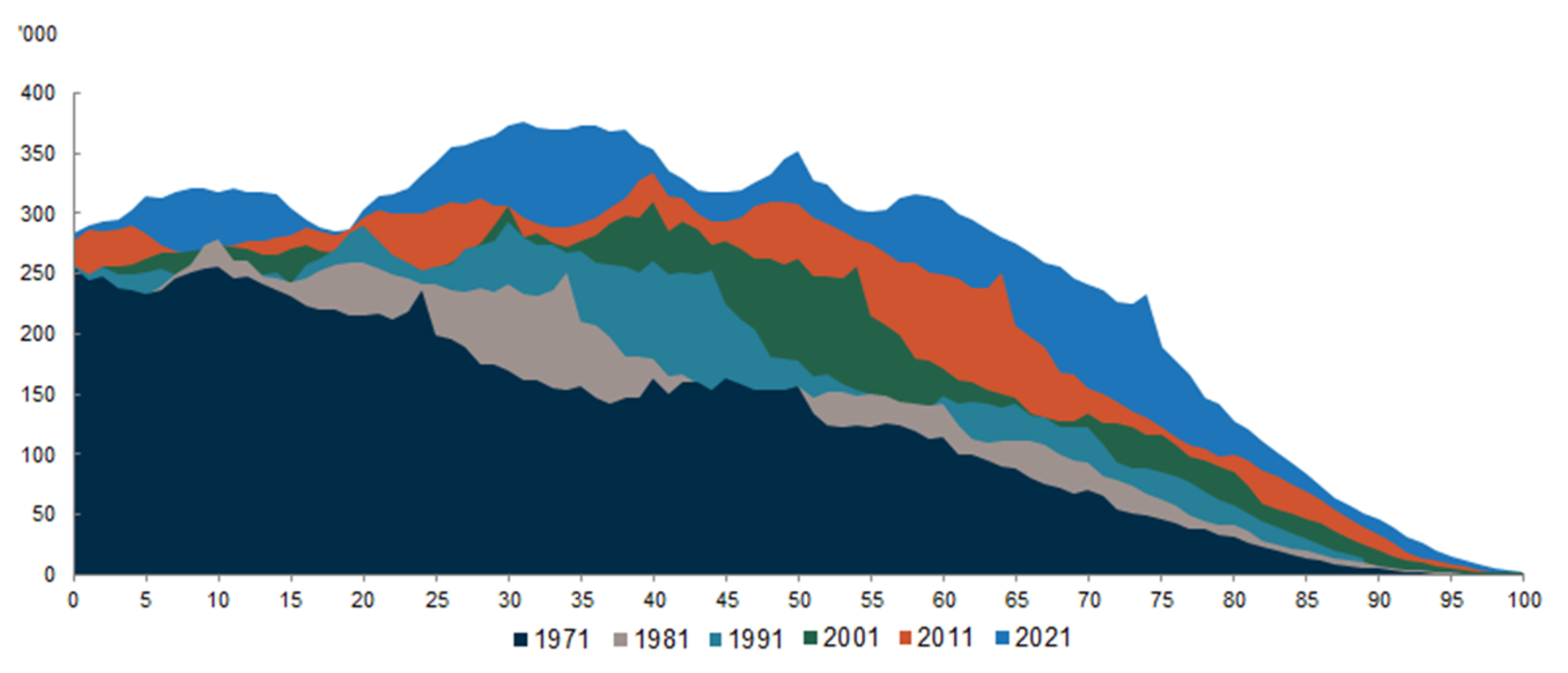Australia’s population has doubled over the last 50 years. Our population is older, with fewer children, and a new peak age group has emerged.

Source. Centre for Population analysis of ABS census data
Text description
Text description of Chart 1: The number of persons at each age from 1971 to 2021
A chart that compares the number of people at each age for each decade between 1971 and 2021.
The main trends are:
- Each decade has had an overall increase in the total population.
- The age group with the highest number of people has gradually shifted upwards from around 10–13 years in 1971 to around 30–35 years in 2021.
- There has been a dramatic increase in the number of Australians older than 20 in contrast to the much smaller increase in the number of people younger than 20 since 1971.
Certain cohorts are represented as spikes throughout the decades. Two of these are:
- The people who were aged around 25 in 1971 can be seen as a noticeable spike which persists all the way to 2021 when this cohort is aged around 75.
- The people that were born around 1971 also constitute a large peak that can be seen throughout the generations through to 2021 where they are aged around 50.
Older Australians are now a greater proportion of the total population and the Baby Boomers (and their children) can be traced through the years
Between 1971 and 2021, the proportion of people aged 65 and over has increased from 8 per cent to 17 per cent. In 1971, there was a large cohort of people around the age of 25 who were born directly after the Second World War as part of the Baby Boom. This cohort can be traced through every census to date as having a very defined peak in population throughout the years, to age 75 in 2021. The children of this cohort also have a defined peak that can be traced through Chart 1, beginning around the ages of 10–13 in 1981.
Our ‘peak age group’ is shifting
The proportion of those aged 21–45 has increased, with a 15 per cent growth in this age group between 2011 to 2021 – making this now Australia’s ‘peak age group’ at 34.3 per cent of the total population. Those in this cohort are at a stage in their lives that typically coincides with beginning a career, forming a family, and seeking to buy a house. The growth in this new peak age group can be in part, attributed to a boost in migration in the past two decades, with the median age of migrants in 2021 being 37 years old. Australia’s median age is expected to increase by 4.6 years between 2022–23 and 2062–63, to reach 43.1 years likely shifting the peak age up further.
Children are a smaller proportion of Australia’s population
In 1971, there was a high proportion of children relative to the rest of the population, with Australia’s peak age at 10 years old. Since the late 1970s, Australia has continued to experience below replacement fertility rates, with a steady decline from 2.95 in 1971 to 1.7 in 2021. The reasons for this decline in fertility include changing costs of having children, greater opportunities for women to participate in the labour force and higher education, and changing social norms.
Downloads
Snapshot – the changing structure of Australia’s population PDF 161 kB
Snapshot – the changing structure of Australia’s population DOCX 199 kB